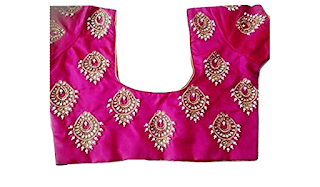Exploring the Saree Draping Styles of India
In India, the saree is a traditional garment worn by women and is known for its elegance and versatility. There are several different styles of draping a saree, and each style is associated with a particular region or cultural tradition. Here are some of the most popular saree wearing styles in India:
1. Nivi Style (or Nivi Drape): The Nivi style is the most common and widely recognized method of draping a saree. It originated in Andhra Pradesh and is now popular across the country. In this style, the saree is pleated and tucked at the waist, with the loose end draped over the shoulder and pulled over the front.
2. Bengali Style: The Bengali style of draping the saree is known for its elaborate and graceful look. The saree is wrapped around the body, and the pleats are placed on the left side and brought around the waist. The pallu (end piece) is draped over the left shoulder and brought around the back, then draped over the right shoulder.
3. Gujarati/Rajasthani Style: The Gujarati and Rajasthani styles are similar and known for their vibrant colors and mirror work. The saree is draped in a way that the pallu is pulled from behind and brought to the front over the right shoulder. It is then taken across the chest and tucked into the left side of the waist.
4. Maharashtrian/Nauvari Style: The Maharashtrian or Nauvari style of draping a saree is unique as it resembles a dhoti. The saree is tucked between the legs to create a trouser-like appearance. The remaining fabric is then draped around the waist and over the shoulder, with the pallu positioned at the back.
5. Tamilian/Madisar Style: The Madisar style of saree draping is popular in Tamil Nadu. It is a traditional and elaborate style where the saree is wrapped around the waist and then draped over the left shoulder. The pallu is brought back and tucked on the right side of the waist.6. Kodagu Style: The Kodagu style of saree draping is specific to the Kodagu region in Karnataka. The saree is wrapped around the waist and pleated in the front. The pallu is brought over the right shoulder and draped across the chest, then tucked into the back of the waist.
7. Assamese Style: The Assamese style of draping a saree is distinct and known for its Mekhela Chador, which consists of a lower wrap and an upper drape. The lower wrap is pleated and wrapped around the waist, while the upper drape is wrapped over the shoulder and worn like a shawl.
These are just a few examples of the different saree wearing styles in India. Each style has its own unique charm and significance, reflecting the diverse cultural traditions and practices across the country.



Comments
Post a Comment